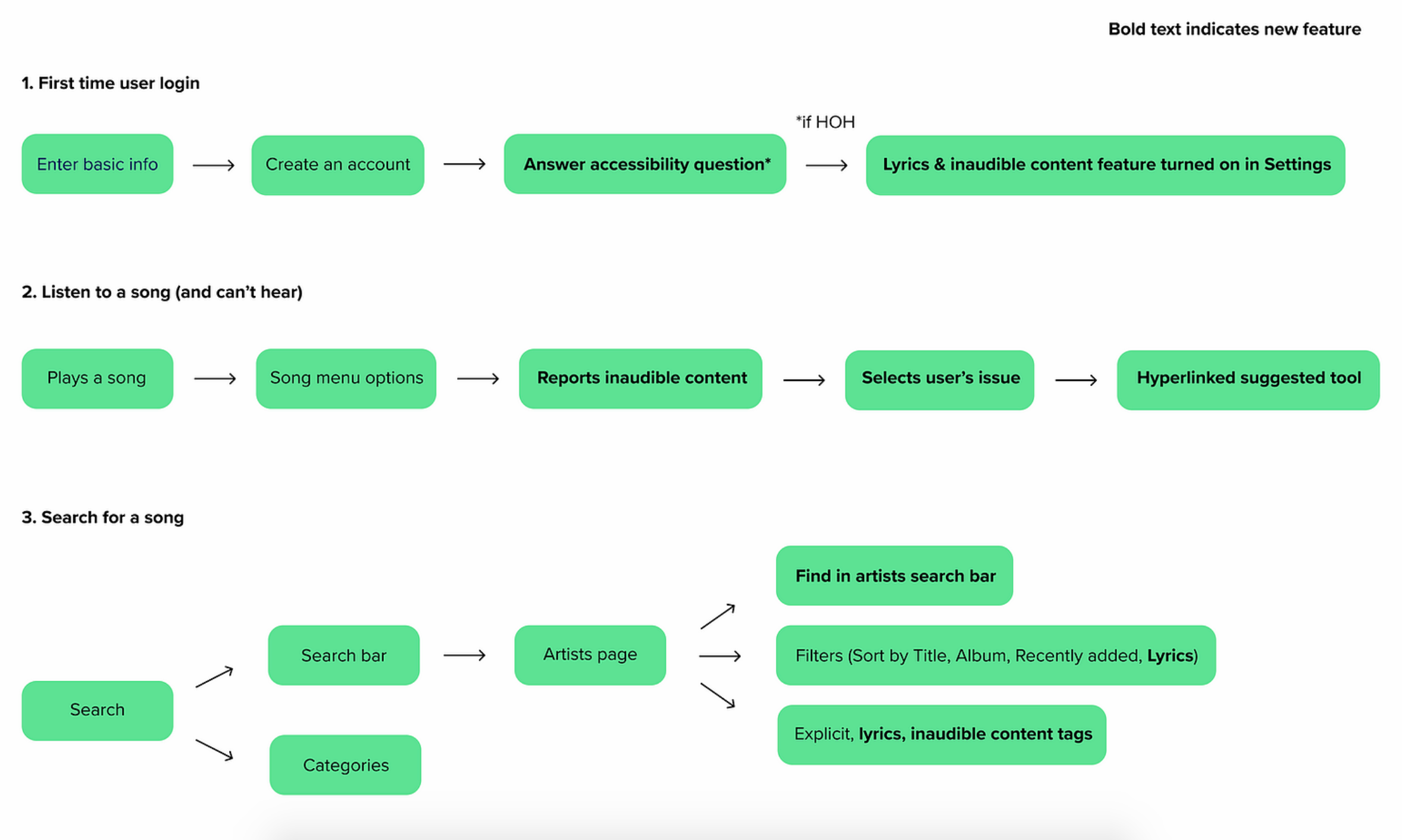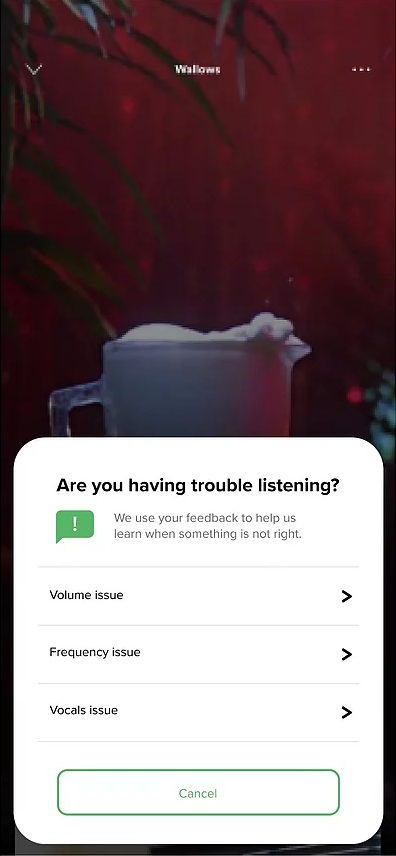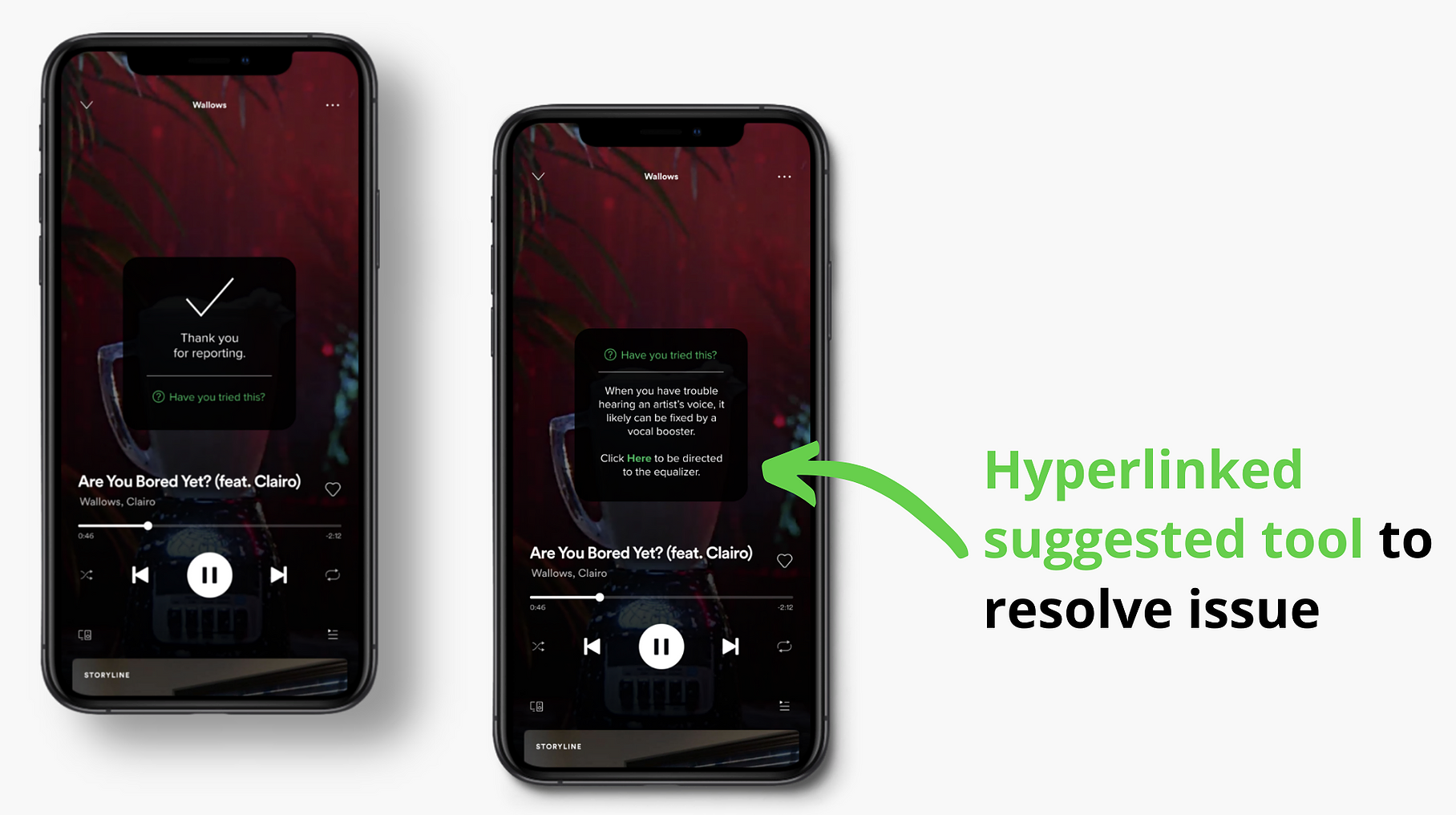Spotify for the HOH and Deaf Community
Description
A Spotify redesign with accessibility features implemented to enhance the music experience for Hard of Hearing (“HoH”) users. Focused on leveraging data-based personalization and machine learning to drive personalization.
The Problem
How might we enhance the Hard-of-Hearing user’s music listening experience on Spotify?
Ideation
Market Validation
Problem 1: About 15% of American adults (age 18 and over) report some trouble hearing. This means approximately 4 million Spotify users are HoH.
Problem 2: Spotify’s revenue surge is largely driven by an increase in premium subscribers. We need to prevent them from churning.
Problem 3: The world is losing its hearing, some of them Spotify’s earliest and most loyal adopters, due to growing older or losing their hearing from external factors. This dispels the myth that Deaf and HoH users are completely distanced from the hearing community.
From a company standpoint, being more inclusive and solving problems for the HoH will ultimately allow Spotify to find ways of further stabilizing churn and look forward to user retention.
Competition
Compared to Apple Music and Pandora, Spotify is zoomed into data and machine learning for user personalization (e.g., Discover Weekly playlists and “couple playlists” through Premium Duo). Being curators in the music and podcast streaming space, Spotify is the best platform for inclusive design for these communities.
More importantly, the Deaf and Hard-of-Hearing community is already on Spotify. The National Institute of Young Deaf People (INJS), in collaboration with Marcel Paris and Publicis, has released the ‘DEAF’ album: a silent, streamable Spotify record that finances a project designed to give Deaf people the gift of music.
Spotify has the sound engineering talent and organic data infrastructure, able to reduce disruptions to the Deaf and HoH users’ listening experience.
User Persona
Name: Jane Doe
Status: Working professional, new Spotify Premium subscriber
Age: 25
With a hearing threshold of 55 dB HL, Jane has moderately severe hearing loss, but she loves listening to music with the help of her hearing aid
Usually tunes into Spotify on the way home from work while riding the subway
Appreciates the customized Discover Weekly playlists that curate music similar to songs by the Wallows, her favorite artist
Is not familiar with all of Spotify Premium’s assistive tech offerings, such as the Behind the Lyrics or equalizer features, so always has to close out of the app and go through third parties such as Google or YouTube to find them. When she runs through this use case, here’s what she’s thinking and feeling:
Although she’s a dedicated user, Jane feels excluded from fully enjoying the music streaming experience. She feels like she’s wasting money and effort, and doesn’t feel understood. Spotify isn’t the one-stop shop for her listening experience, and it’s not giving her the guidance she wants when she runs into audio issues.
User Flow
Design Explorations
1. We attempted to consolidate the reporting features to include the existing “Report explicit content” and our “Report inaudible content” features. However, our team decided that it would be best to keep the two features separate, in order to minimize extra clicks from the user.
2. We updated copywriting for the “Are you having trouble listening?” screen. We used language familiar to the regular Spotify user and wording that reflect their natural thoughts (i.e., Vocals issue to 'I can’t hear the artist’s voice,' Frequency issue to 'I hear screechy sounds').
3. We also received user feedback and changed the wording from “Do you or have you had problems with hearing?” to “Would you like to enable hearing assistive settings?” This puts more focus on the settings and less on the user’s disability.
4. We tried to design two pop-ups: one pop-up following another on the screen after reporting inaudible content. However, we chose to consolidate the information into one message, again to reduce the number of the user’s clicks.
5. With the decision to consolidate the information, we also attempted to display information on one pop-up. However, we ended up designing the pop-up to where if the user clicks on “Have you tried this?”, it would show the details. We realized that a huge block of information could be overwhelming to the user or that the user may not bother to spend their time to resolve the issue on their own.
Key Features
In the rising global wave for social justice and breaking barriers, accessibility mustn’t be swept away. Luckily, inclusive design is becoming a priority. We hope that Spotify pushes forward in the charge to dispel the myth that the Hard-of-Hearing can’t enjoy or access the things that hearing people consider mainstream, particularly the joy of experiencing music. The users we interviewed, with varying hearing thresholds, proved so much to the contrary.












